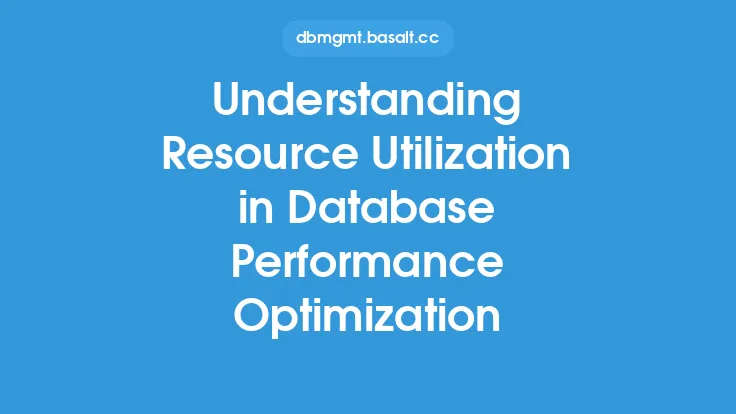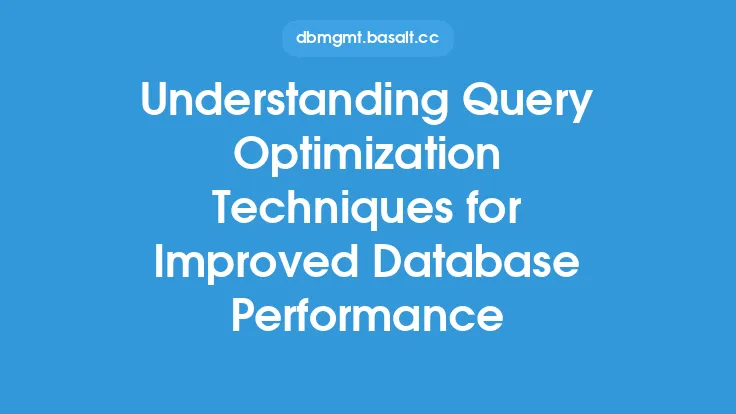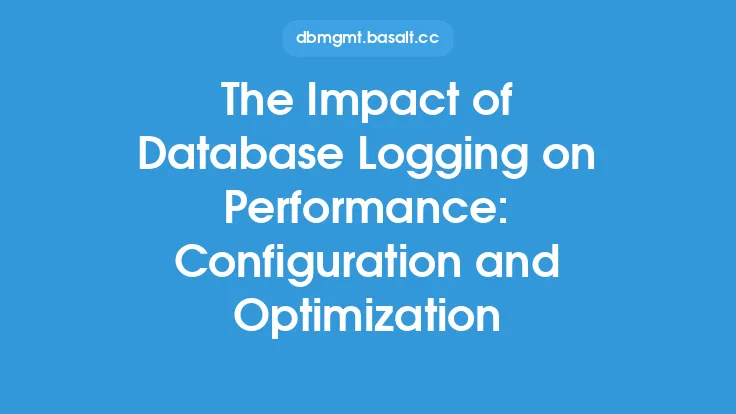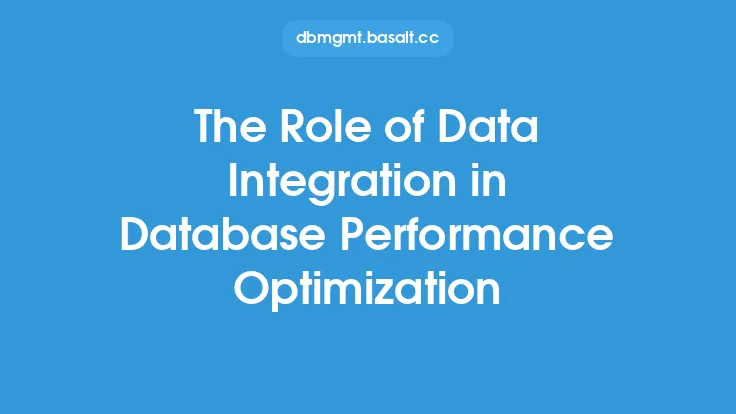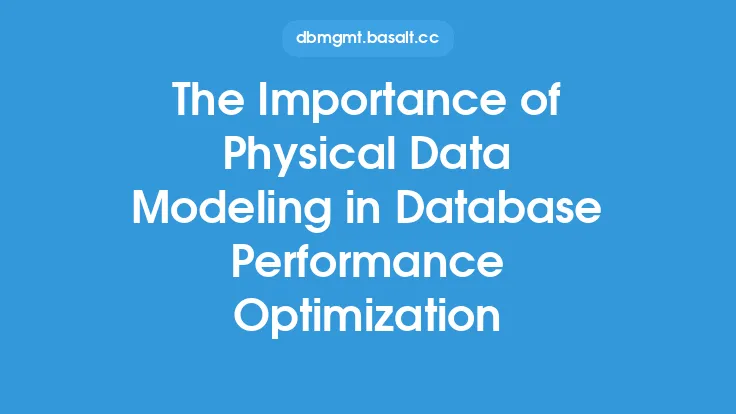When it comes to database performance optimization, storage optimization plays a crucial role in ensuring that data is stored and retrieved efficiently. Storage optimization is the process of configuring and managing storage resources to achieve optimal performance, capacity, and reliability. In this article, we will delve into the world of storage optimization in database performance, exploring the key concepts, techniques, and best practices that can help you optimize your database storage.
Introduction to Storage Optimization
Storage optimization is a critical aspect of database performance optimization, as it directly impacts the performance, scalability, and reliability of the database. The primary goal of storage optimization is to ensure that data is stored and retrieved in the most efficient manner possible, minimizing latency, maximizing throughput, and reducing storage costs. To achieve this, database administrators must carefully consider factors such as storage capacity, data distribution, query patterns, and storage device performance.
Understanding Storage Components
To optimize storage, it's essential to understand the various components that make up a storage system. These components include:
- Storage devices: Hard disk drives (HDDs), solid-state drives (SSDs), and flash storage devices are the most common types of storage devices used in databases.
- Storage controllers: These devices manage the flow of data between the storage devices and the database server.
- Storage networks: Storage networks, such as SANs (Storage Area Networks) and NAS (Network-Attached Storage), provide a high-speed connection between the storage devices and the database server.
- File systems: File systems, such as NTFS and ext4, manage the storage and retrieval of data on the storage devices.
Storage Optimization Techniques
There are several storage optimization techniques that can be used to improve database performance. These include:
- Striping: Striping involves dividing data into smaller chunks and storing them across multiple storage devices. This technique can improve performance by increasing throughput and reducing latency.
- Mirroring: Mirroring involves duplicating data on multiple storage devices to improve reliability and availability.
- Caching: Caching involves storing frequently accessed data in a faster, more accessible location, such as RAM or a cache layer.
- Data placement: Data placement involves strategically placing data on storage devices to optimize performance, based on factors such as query patterns and data access frequencies.
Storage Device Optimization
Storage device optimization is critical to achieving optimal database performance. This involves selecting the right storage device for the job, based on factors such as performance, capacity, and cost. For example:
- HDDs: HDDs are suitable for large, sequential workloads, such as data warehousing and archiving.
- SSDs: SSDs are suitable for high-performance, random workloads, such as transactional databases and real-time analytics.
- Flash storage: Flash storage is suitable for extreme, high-performance workloads, such as high-frequency trading and real-time data processing.
Storage Configuration Optimization
Storage configuration optimization involves configuring storage devices and storage networks to achieve optimal performance. This includes:
- RAID configuration: RAID (Redundant Array of Independent Disks) configuration involves configuring multiple storage devices to work together to improve performance, reliability, and capacity.
- Storage network configuration: Storage network configuration involves configuring storage networks to optimize performance, based on factors such as bandwidth, latency, and packet loss.
- File system configuration: File system configuration involves configuring file systems to optimize performance, based on factors such as block size, fragmentation, and caching.
Monitoring and Maintenance
Monitoring and maintenance are critical to ensuring that storage optimization techniques are effective and that storage systems continue to perform optimally over time. This includes:
- Performance monitoring: Performance monitoring involves tracking key performance metrics, such as throughput, latency, and IOPS (Input/Output Operations Per Second).
- Capacity planning: Capacity planning involves forecasting storage capacity requirements and planning for future growth.
- Error correction: Error correction involves detecting and correcting errors that can impact storage performance and reliability.
Best Practices
To achieve optimal storage optimization, it's essential to follow best practices, such as:
- Regularly monitoring performance: Regularly monitoring performance to identify bottlenecks and areas for improvement.
- Implementing a storage strategy: Implementing a storage strategy that aligns with business requirements and database workloads.
- Testing and validating: Testing and validating storage optimization techniques to ensure they are effective and efficient.
- Continuously optimizing: Continuously optimizing storage systems to ensure they continue to perform optimally over time.
Conclusion
Storage optimization is a critical aspect of database performance optimization, and it requires a deep understanding of storage components, storage optimization techniques, and best practices. By following the techniques and best practices outlined in this article, database administrators can optimize their storage systems to achieve optimal performance, capacity, and reliability, and ensure that their databases continue to perform optimally over time.
